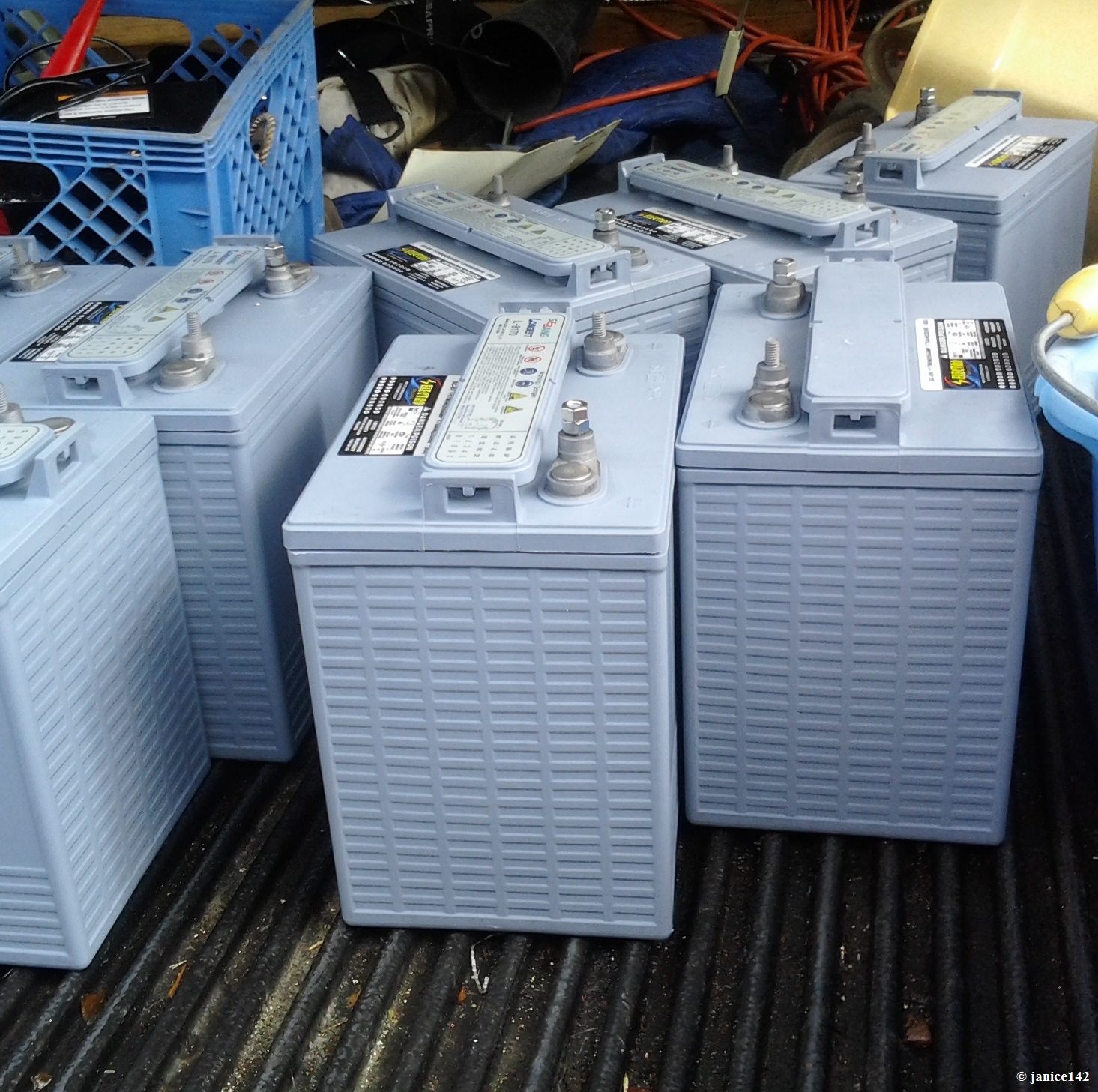All,
Have a few questions about batteries.
First, I have 4 of the West Marine 6v AGMs, wired for a 12v system. They are 190ah each so I get 380ah from the back or 190ah running them to 50% capacity. Sound right?
When I charge them, gen or alternator, the most I can charge them to is 12.5v (think I should get 12.7). The original alternator, with out a smart regulator, was used prior to my ownership for the first 2 years of these batteries and suspect they have been somewhat damaged with overcharging. They are 3 to 4 yrs old.
With my requirements, 2 fridges, coffee in morning, microwave for a minute or two, and charging of computers, I'm about out after the coffee is made. As I type, I need to start the gen, showing 10.3v. Turning off the coffee maker it jumps up to 10.7v and I really don't like to go below 11v.
I get up early and don't like to be the prick that cranks his generator at 6am and pisses off all the sail boaters around, so need to get me thru 8 am at least.
I'm thinking of upping the battery capacity and my first choice is the Lifeline 6v GPL 6CT batteries that would give me 600ah. They are 2 in higher, but fit well....easy install.
The Odysseys look good, but size is a bit too long and would require mods.
Other batteries to consider?
===
Can't think of other options...
Solar would be great, but a major mod to do it right, expensive and I just have no place to put the cells.
Thoughts?
Have a few questions about batteries.
First, I have 4 of the West Marine 6v AGMs, wired for a 12v system. They are 190ah each so I get 380ah from the back or 190ah running them to 50% capacity. Sound right?
When I charge them, gen or alternator, the most I can charge them to is 12.5v (think I should get 12.7). The original alternator, with out a smart regulator, was used prior to my ownership for the first 2 years of these batteries and suspect they have been somewhat damaged with overcharging. They are 3 to 4 yrs old.
With my requirements, 2 fridges, coffee in morning, microwave for a minute or two, and charging of computers, I'm about out after the coffee is made. As I type, I need to start the gen, showing 10.3v. Turning off the coffee maker it jumps up to 10.7v and I really don't like to go below 11v.
I get up early and don't like to be the prick that cranks his generator at 6am and pisses off all the sail boaters around, so need to get me thru 8 am at least.
I'm thinking of upping the battery capacity and my first choice is the Lifeline 6v GPL 6CT batteries that would give me 600ah. They are 2 in higher, but fit well....easy install.
The Odysseys look good, but size is a bit too long and would require mods.
Other batteries to consider?
===
Can't think of other options...
Solar would be great, but a major mod to do it right, expensive and I just have no place to put the cells.
Thoughts?

